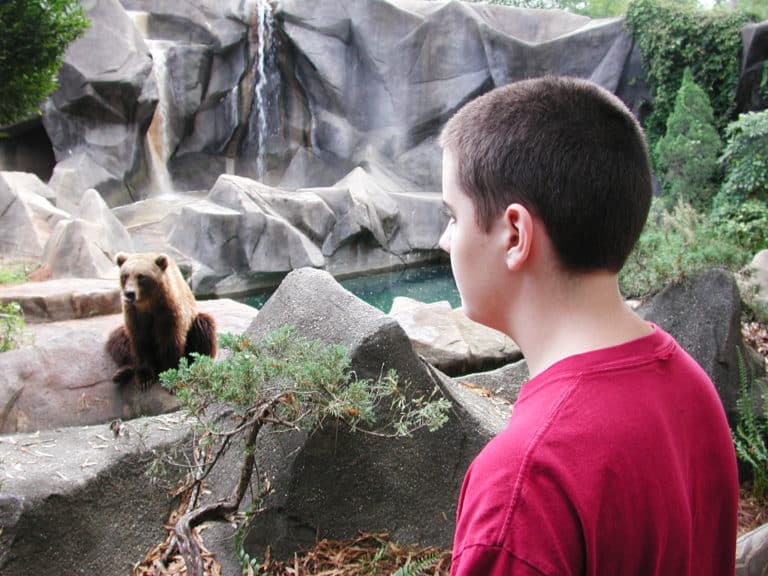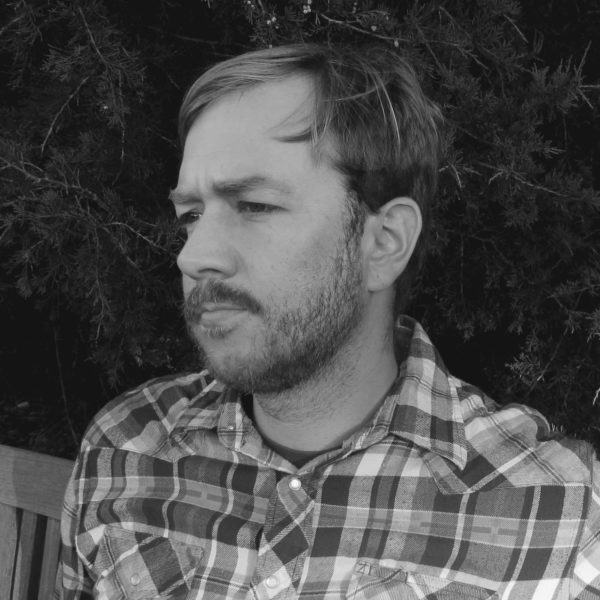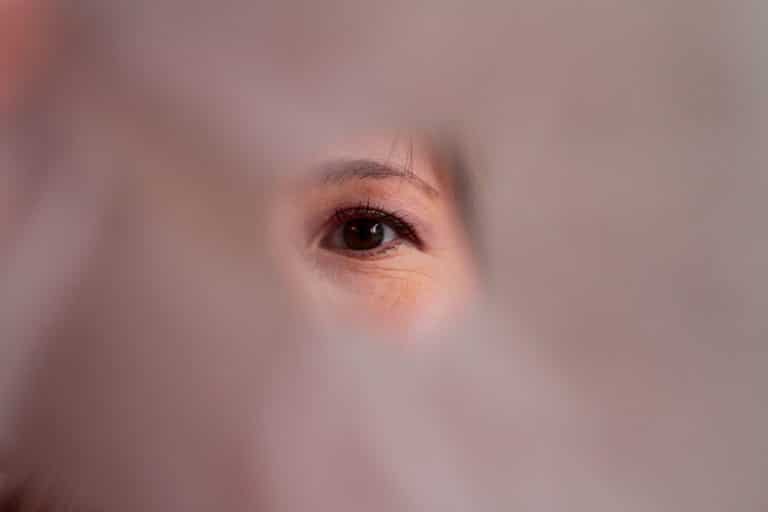
Image by Dave/Flickr, Some Rights Reserved.
An Inclination Toward Warmhearted Inclusivity: How We View and Serve the Autism Community
Bill and I are staring at a red-tailed hawk that lives at the Hallam Lake Nature Preserve in Aspen, Colorado. Many people assume that Bill, a 28-year-old with “classic” autism, lacks crucial human characteristics like empathy, theory of mind (the ability to intuit someone else’s perspective), and a nuanced attention to language.
On the surface, these assumptions might seem justified — Bill flaps his hands, has difficulty making eye contact, labors to carrying on a conventional conversation, and struggles to complete tasks as mundane as buying breakfast at the local coffee shop — but on this particular day Bill is going to prove all those people wrong, by writing a poem.
For decades now, a majority of professionals working with autistic kids and adults have chosen to single out social deficits like Bill’s for rigorous therapeutic attention, devoting immense time and effort to ridding them of autistic behaviors that diverge from the neurotypical norm. It turns out that most of these deficits belie an overlooked or undervalued strength. For instance, one of the several deficits listed under the diagnostic criteria for ASD (autism spectrum disorder) in the DSM-5 is a predilection for “highly restricted, fixated interests that are abnormal in intensity or focus.” In most cases, when a neurotypical person displays this same predilection we say they have a passion for something. One person’s restricted interest is another’s area of devoted study.
As a poet, I’ve always been fascinated by the inherent strengths of autistic writers, among them their care for the specificity of language, their sensory intelligence, and their ability to recognize patterns in sound and sense. A surprising and increasingly well-documented reciprocity between poetry and autism has taken shape, over the years, and it’s helped highlight a possible shift from the deficit model to a new approach where inherent strengths are given equal attention.

When we first arrived at the red-tailed hawk’s enclosure, our guide informed us that the raptor became a resident of Hallam Lake after a broken wing left it unable to fly. Upon hearing this news, Bill jumped up and down and grunted passionately. He seemed genuinely upset. To me it was an explicitly empathetic reaction, though Bill was too stimulated by the information to confirm his reaction verbally.
This is one of the problems with judging empathy. Research has shown that empathy is actually a process: it begins as emotional empathy, is translated into cognitive empathy, and is finally expressed using motor empathy. A 2009 article by Scottish researcher Adam Smith showed that people with autism actually possess more emotional empathy than their neurotypical counterparts, but significant challenges with cognitive empathy (understanding their own reaction) and motor empathy (communicating that reaction in a legible form) often make it impossible for their initial, emotional reaction to make itself known.
We were accompanied at Hallam Lake by an assortment of staff from Ascendigo, a non-profit serving the autism community through a rigorous mix of outdoor activities, sports, life skills, employment opportunities, and, increasingly, intellectual enrichment like creative writing. I had prepared a writing exercise for Bill and three other young men with autism. I asked them to pick one of the three protected raptors at Hallam Lake and study it closely, paying keen attention to what the bird hears and sees. I called this challenge a “Bird’s Eye” poem and wanted them to communicate the experience of a bird from the inside out, despite the fact that readers of the DSM-5 would imagine this task was beyond their social understanding.
Since Bill often finds the motor process of writing difficult, Diane Osaki, his brilliant and devoted occupational therapist, began by asking him some generative questions. At first, Bill’s responses corroborated the common prejudice that he lacks theory of mind, or the ability to imagine what another’s experience of the world might be:
The hawk is looking at me
The hawk is smiling at me
These first two lines of his poem seemed to confirm an autistic worldview, going back to the etymological root of autism: self-focused. But then Bill slowly allowed the bird’s own experience to enter and overtake the poem:
He spreads his wings
He scratches his feathers
Notice the shift in address from “the hawk” to “he,” demonstrating the autistic penchant for personification, wonderfully articulated in a recent paper and talk by poet and professor Ralph James Savarese. Personification is a common poetic trope, but even more common among those with autism, and it reveals their inclination toward warmhearted inclusivity.

Autistic thinkers welcome the participation of animals, trees, objects, and even weather into our human world of thought and action. The neurotypical brain is often too busy prioritizing strictly human content to sift through the rich, more-than-human world around them.
In this sense, the neurotypical brain possesses its own highly homogenous restricted interest: human social interaction. A great poet, however, must ground her work in sensory observations that move past the limited transactional nature of the purely human to get at the vast “real world” going on all around. And that’s what autistic writers do naturally:
The hawk hears rustling leaves
The hawk wants to fly
so he hears
For someone with profound language difficulty, a word like “rustling” is remarkably apt, and it sets the scene for a lovely aural trio linking the “L” sounds of rustling, leaves, and fly. But these final lines seemed unfinished at first. Diane kept asking what it is the hawk hears, and Bill repeatedly indicated that the poem was complete.
To our ears, the sentence needed its final noun, but Bill saw (or heard) it differently.
I stood next to him, watching the hawk tilt its head upward, searching the trees and the sky beyond them, shifting focus to listen to an airplane in the distance. That’s when I realized that Bill had successfully adopted the bird’s eye (or ear) view. The poem was finished precisely because the hawk had a broken wing. She couldn’t fly out to meet these sounds and sights, as much as she clearly desired to do so. She could only hear flight as it was embodied by distant airplanes and other birds. Not only was the poem complete, but through its seeming incompleteness it dramatized the life of a bird who had been cut off from its central ability.
Perhaps it’s time to reimagine how we view and serve the autism community. A social deficit, like attending equally to all facets of the environment, can be restaged as an ethical strength, enlarging what we care for and about. We often demand that people with autism learn how to act more like “us,” some specious version of normal. But what if we spent more time trying to understand how each individual voice, precisely because it is different, might contribute to a larger and more invigorating conversation about who “we” are and how we’re changing to meet an increasingly complex and diverse world?
When we think of unique and caring individuals like Bill as a collection of deficits, we not only risk alienating them, but also the parts of ourselves that exist necessarily outside the so-called norm. We must remain open and assume ability, so we don’t miss out on crucial lessons like the one Bill taught us this day at Hallam Lake, as he deftly tapped into the vicarious life of a crippled bird.


Share your reflection